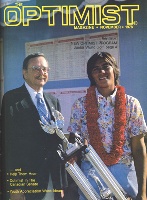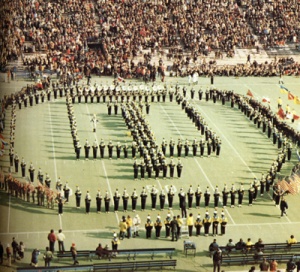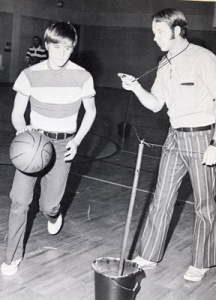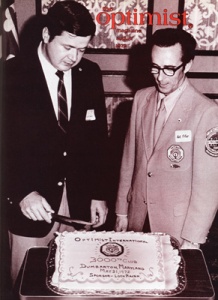|
As the 1970s began, the organization continued to develop new programs for the development of young people. The Tri-Star Basketball program for boys 9 to 12 years of age was adopted. The first year of the program saw more than 300 Clubs and 75,000 youngsters participate. Competing with others their own age, boys demonstrated their skills at passing, shooting and dribbling. As it grew in popularity, the Tri-Star program was later expanded to include football, baseball, golf and hockey, and began to offer opportunities for girls to participate also. In 1972, the Opportunity for Involvement Club program was adopted. An Opportunity for Involvement Club was made up of young men and women in the 10th, 11th and 12th grades and the upper four grades in Canada. The Club served as a vehicle through which they could become active and involved in solving problems that challenged their community and society. As the ecology movement grew in society, Optimists became involved through the L-I-F-E (Living is for Everything) program. It was a program through which a Club could educate, stimulate and lead its home community in an organized battle for clean air, pure water, uncluttered streets, proper disposal of trash and junk, and a quiet atmosphere. On October 15, 1972, 70 of North America’s top community leaders, hand-picked for their prestige, expertise at getting things done and their awareness of a mounting social problem, venereal disease, gathered in St. Louis at the request of Optimist International. They had come for the two-day seminar, financed by a grant of $20,000 by the United States government, to consider the problem and what could be done about it. |
|
Optimist International, with the launching of its program AVOID in 1972, became one of the first service club organizations to move in a direction to conduct an active program to combat syphilis and gonorrhea. As the programs of the organization became more inclusive of all children, boys and girls alike, the organization once again altered its motto from “Friend of the Boy” to “Friend of Youth.” In 1974, after several discussions with officials of the U.S. Department of Housing and Urban Development, Optimist International launched another new program called “Adopt a Neighborhood.” The program recommended that a metropolitan Club select a definable small area in an inner-city neighborhood, such as a public housing development. A youth center, church or school would be used as a focal point. While the main objective of the Optimist volunteers was to provide service, guidance and help to disadvantaged youth, they were also to serve the entire community. |
As the decade of the 1970s entered its final years, Optimists looked for more new programs and challenges to which they could turn their efforts. In 1978, the organization developed the Optimist Junior World Golf Tournament. 1978-79 International President Dudley Williams of San Diego had initiated discussions of co-sponsoring one of the most prestigious junior golf events in the world with the San Diego Junior Golf Association. Optimist Clubs and Districts began holding qualifying tournaments to advance their best young golfers to the annual championships held at the Torrey Pines courses in San Diego. The tournament featured over 700 young golfers annually competing in five age groups. In 1995, the organization decided the time had come to be able to offer more young golfers from its District qualifiers the opportunity to participate at an international level. That summer, the Optimist International Junior Golf Championships were born at Doral Country Club in Miami, Florida. The following year the championships were relocated to the PGA National golf courses in Palm Beach Gardens, Florida, where the prestige of “The Optimist,” as it has come to be known among the young golfers, continues to grow. And while many Clubs were helping the gifted young athletes in their communities, others jumped on the bandwagon when the Help Them Hear program was rolled out for introduction in the 1978-79 year. Help Them Hear offered many Clubs a chance to do something for those young people, and adults, who were hearing impaired. The program was designed so that Clubs could implement programs to heighten public awareness of the problems associated with hearing impairment; and to provide local testing facilities as well as corrective and educational techniques for those with hearing problems. The program led to the formation of the Communication Contest for the Deaf and Hard of Hearing (CCDHH), which shared equal billing with the Oratorical and Essay contests. |
 Optimist International President Dudley D. Williams presents a trophy to Monty Leong, winner of the boys 15-17 division in the first Optimist Junior World Championships. |
 At a 1973 Michigan-Illinois football game in Ann Arbor, Michigan, the band pays tribute to Optimists and youth prior to the game, as 80,000 spectators enjoy the celebration. |
|

